The 2001 Midwest Regional IDSA Conference (March 23 - 25), "Designing the Experience," focussed largely on the topic of User-Research. Since this specialization within Industrial Design (if indeed it is part of the field and not just tagging along trying to get into the show) is a hip and hot area now, one might be tempted to gloss over it as merely the "flavah of the week." The true design Epicurean may not be so quick to dismiss.
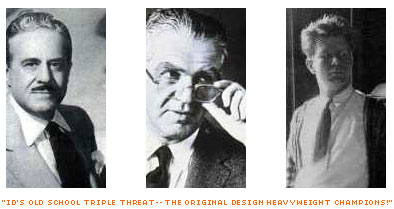
SOME BACKGROUND
In some degree or another, user research has been with us since the days of ID's old-school heavyweights like Loewy (www.raymondloewy.com), Bel Geddes, Teague (http://www.wdta.com), and Dreyfuss (http://www.hda.net/index.html). Concomitantly, marketers have practiced some semblance of segmenting, surveying, and sampling since the turn of the century (back when they partied like it was 1899). And in the early 1900's, when Anthropology got out of the armchair, donned a pith helmet, and ventured into the field, "ethnography" was born--the study of a culture through actual observation of its members (literally, "writing culture").
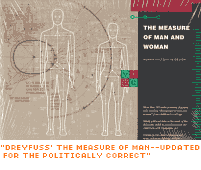 What's special now about "user-research" (soon it won't even need the hyphen) is the confluence of the artifactual focus of ID, the ineluctable aims of marketing, and the methodologies of anthropology (or more broadly, the social sciences). User-research has grown up since Dreyfuss' The Measure of Man.
What's special now about "user-research" (soon it won't even need the hyphen) is the confluence of the artifactual focus of ID, the ineluctable aims of marketing, and the methodologies of anthropology (or more broadly, the social sciences). User-research has grown up since Dreyfuss' The Measure of Man.
Today (and most of you know this), the larger product design/development firms often have in-house research teams comprised of marketers and, less frequently, social scientists; many of the smaller ones that don't, hire research consultants to do their ethnographic bidding.
Chicago has a concentration of such consultancies and firms with these enlightened perspectives. This may be due to the Illinois Institute of Technology's (www.id.iit.edu) groundbreaking graduate program (the first ID Ph.D. program in the US), and the University of Chicago's venerable social science departments (http://social-sciences.uchicago.edu/). One of the oldest, The Doblin Group, (www.doblin.com) has been using social science with its strategic design focus for over twenty-six years, and is fed by IIT grads.
 "Chicago's Dynamic Ethnographic Duo"
"Chicago's Dynamic Ethnographic Duo"
E-Lab, founded by some University of Chicago sociology Ph.D.s, probably had the best formula for getting both designers and social scientists into the mix. Two years ago it was bought-out by the internet firm Sapient,(www.sapient.com) (back when its stock price was roughly the same as it is now, but 90% below its year-ago high), and has subsequently lost some of its industrial design 'ooomf' in favor of a more interactive media focus. In a company like this, founded on research, CEO means Chief Experience Officer.
Other notable (but certainly not all) Chicago firms with research staffs are IDEO (); Herbst, Lazar, Bell (www.hlb.com); and Insight Product Development www.insightpd.com). While many, especially the smaller firms, have their toe in the water, sufficient research emphasis largely remains a luxury--done correctly it is a synchronized swim of sorts with manufacturing, marketing, design, and research (pardon the evocation of Tucker Viemeister in a bathing cap and Speedo www.speedo.com). Both consultants and their clients may soon learn that they can't afford not to do it right.
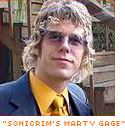 THE CONFERENCE
THE CONFERENCE
Central to this year's user-research theme were the folks at SonicRim www.sonicrim.com, specifically Marty Gage, Principal. On the first day, with his quirky presentation style, Marty--imagine Bill (sans fellow Excellent Adventurer, Ted) meets Wally Cleaver, clad in vintage threads--took participants through a process of experience modeling.
Using markers, stickers, and poster board, participants collaged words and images to represent an experience, and then had to verbalize it. This is two parts of the modeling hat-trick: interpreting what people say, do, and make. He also distributed a draft-copy of a focus group book chapter, "Harnessing People's Creativity: Ideation and Expression through Visual Communication," written by fellow SonicRimmers, Liz Sanders and Colin T. William. Marty charged everyone 20 bucks for the seemingly meager workshop supplies--also a lesson that research ain't cheap (or can seem overpriced to the client).
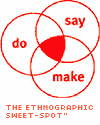
Kevin Henry of Columbia College's Industrial Design Department ((http://www.colum.edu/undergraduate/artanddesign/productdesign/index2.html) gave a presentation on an undergraduate class project, the "Chalker"--a walker with seating capabilities. In this course students were to design a specific walking assistance device for a specific client. Students went to the client's home and videotaped different aspects of the main use environment and interviewed the intended user. Kevin designed a Filemaker database in which key video clips could be accessed for information for the product design team. Much of Kevin's talk revolved around, not only the importance of
collecting the data itself but, providing a means by which it can be usefully accessed.
 On Day 2 of the conference, Marty showed up again to speak about the particulars of the SonicRim work and its evolution from the research originally conducted at Fitch (www.fitch.com) -- where the founders began inventing user-research methods specifically for product design. He introduced some of their first projects, beginning with a headset, moving on to a military pallet loader, and then to the Ultima 2000 meat wrapping device ("As easy to use as an ATM!" its ads once stated). They began using 3-D design kits, giving them to users and having them do their own designing.
On Day 2 of the conference, Marty showed up again to speak about the particulars of the SonicRim work and its evolution from the research originally conducted at Fitch (www.fitch.com) -- where the founders began inventing user-research methods specifically for product design. He introduced some of their first projects, beginning with a headset, moving on to a military pallet loader, and then to the Ultima 2000 meat wrapping device ("As easy to use as an ATM!" its ads once stated). They began using 3-D design kits, giving them to users and having them do their own designing.
SonicRim's tenets of user-research include being involved throughout the development cycle--through the generative, evaluative, and experimentation stages. They believe that "People have experiences that you can't design," and have formulated the "New Principles" that all people are creative, have dreams, fill in, and project needs.
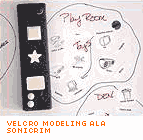 The other major talk on user-research featured Jim Caruso and Chris Connely of Motorola www.motorola.com). They spoke of their Consumer Experience Design Organization and the increase in the divisions within Motorola's design department. They warn that you can't just have good ideas (need I mention, Newton or Iridium?).
The other major talk on user-research featured Jim Caruso and Chris Connely of Motorola www.motorola.com). They spoke of their Consumer Experience Design Organization and the increase in the divisions within Motorola's design department. They warn that you can't just have good ideas (need I mention, Newton or Iridium?).
They do what they call "immersive research," which is getting in touch with, watching, and interviewing product users. Chris took the audience through some examples of design research which produced product concepts such as the "Hearing Hand"--a vibration message device; the "Life Recorded" phone/camera; the "Mood Hood" and "Mood Pod" that the user wears or enters and receives sensual feedback. Overall, Chris and Jim provided a glimpse at research-based forward-thinking within Motorola's design department, appearing to be a good example of a company adopting or at least apportioning substantial resources in order to successfully compete in an increasingly complex marketplace.
 So, user-research in practice is no fad. Use of the term, however, and its litany of euphemisms (e.g., consumer research, design ethnography, immersive research, people research, and user-centered research) proves as nauseating as kicked-off "Survivor" cameos.
So, user-research in practice is no fad. Use of the term, however, and its litany of euphemisms (e.g., consumer research, design ethnography, immersive research, people research, and user-centered research) proves as nauseating as kicked-off "Survivor" cameos.
In the mid- to late 1990's design became the great discriminator in the product development process--probably due in large part to a leveling of the manufacturing playing field. Industrial Design finally got a seat at the boardroom table (in addition to roles in FedEx and other TV commercials). Now it seems that with increased design competition the bar has been raised. User-research is knocking at the boardroom door (it seems to have made it past the secretary) to assert its rightful place alongside the other critical members of the product development team. User-research is here to stay and indeed it never left, although now, it's bigger and badder than ever.
For an overview of the conference, go to: Conference Overview
For general bitches and moans about this article, feel free to email the author (who often refers to himself in the third person) at b-tharp@uchicago.edu.
Bruce M. Tharp (there he goes again) is a Ph.D. Student of Sociocultural Anthropology at the University of Chicago trying to bridge the gap between the worlds of Industrial Design and Anthropology. Having previously studied Mechanical Engineering and Industrial Design, he is now researching the connection between artifact consumption and the "production of self"--how products and the meanings we ascribe to them affect us at individual and collective levels. He welcomes your comments.